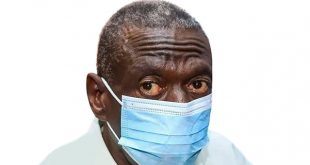
By Peace Kikoni
Sept.15 is World Lymphoma Awareness Day (WLAD) dedicated to raising awareness of lymphoma, an increasingly common form of cancer. It is aimed at helping us better understand our lymphatic systems and know the signs and symptoms of the disease so it may be detected early, and therefore offer a better chance for a quicker diagnosis, treatment and overall survival.
Perhaps the most devastating news one can hear is that they or their loved one has cancer. World Lymphoma Awareness Day was initiated to encourage us all to be more proactive in regards to knowing our bodies. Symptoms that we regard as “common” like tonsillitis or a headache or even flu might actually be the early warning signs of something more serious. Early and correct diagnosis of the lymphoma makes a great impact on treatment and outcome. Lymphoma is a type of cancer that starts in the lymphatic system. It is the most commonly occurring blood cancer and the third most common childhood cancer.
One million people worldwide live with lymphoma. It has one of the fastest rising incidence rates of any cancer and the exact cause of it is still unknown. Despite this staggering number, many people still don’t know what lymphoma is; its signs and symptoms, and that it is life-threatening.
It helps to know about the body’s lymph system or lymphatic system, as it is sometimes known.
Simply put, the lymphatic system looks like a tree, with many outstretched branches called lymphatic vessels.
Tonsils are perhaps the best-known part of the lymphatic system; they work with the immune system to help prevent infections. Frequent bouts of tonsillitis and enlarged tonsils can be a sign of a more serious illness. These lymph vessels or tubes drain a clear fluid called lymph away from areas of inflammation and infection. There are several hundreds of filters scattered at certain points throughout the lymphatic system called lymph nodes. These lymph nodes harbour white blood cells called lymphocytes and it is in these lymphocytes that lymphoma starts and it is through the fluid that it spreads to other parts of the body.
Signs and symptoms
The symptoms and signs of lymphoma can often be mistaken for other less serious illnesses, like the flu or the common cold but the difference is that the symptoms of lymphoma persist long after the usual run of a viral illness. As a result, lymphoma is often misdiagnosed as menopause, the flu, allergies or fatigue. However an early and accurate diagnosis is important, because if untreated, some types of lymphoma can be fatal within a short period of time.
The symptoms typically involve painless swelling of the lymph nodes, often in the neck or armpits where the lymph nodes are concentrated. Swelling may also occur in the groin and abdomen, although some people do not experience any detectable swelling in any part of the body. Other symptoms may include fevers, especially at night, drenching night sweats, chills or temperature swings, unexplained weight loss, loss of appetite, unusual tiredness or lack of energy, persistent coughing, breathlessness, persistent itch all over the body without an apparent cause or rash, general, fatigue over a long period of time, enlarged tonsils, headaches, dizziness and finger clubbing.
Most people who have complaints like these may not have lymphoma. However, it is important that any person who has persistent symptoms see their doctor for a full medical checkup.
Lymphoma treatment
One of the most common type of lymphoma in Uganda is Burkitt’s lymphoma. It was first described in 1958 as a sarcoma of the jaw but later confirmed to be a distinct form of Non-Hodgkin’s lymphoma. This discovery was the defining moment of cancer research in Uganda. The disease is named after Denis Parsons Burkitt who made the first observations whilst living in Uganda. Despite its early observations, its incidence has significantly increased recently due to yet unknown factors.
With two main types of lymphoma and several subtypes, treatment for each one varies and while there are cures for some subtypes of lymphoma, there are others that are very hard to treat or that grow very slowly which may require no treatment for many years and have no cure. It is important to get the correct diagnosis early on, so as to receive the correct treatment protocol.
Get to know your body more this September; understand why the lymph nodes at the back of your neck are swollen, if they are; understand why your cough seems to persist; be proactive by seeking medical advice if symptoms persist.
 The Independent Uganda: You get the Truth we Pay the Price
The Independent Uganda: You get the Truth we Pay the Price


